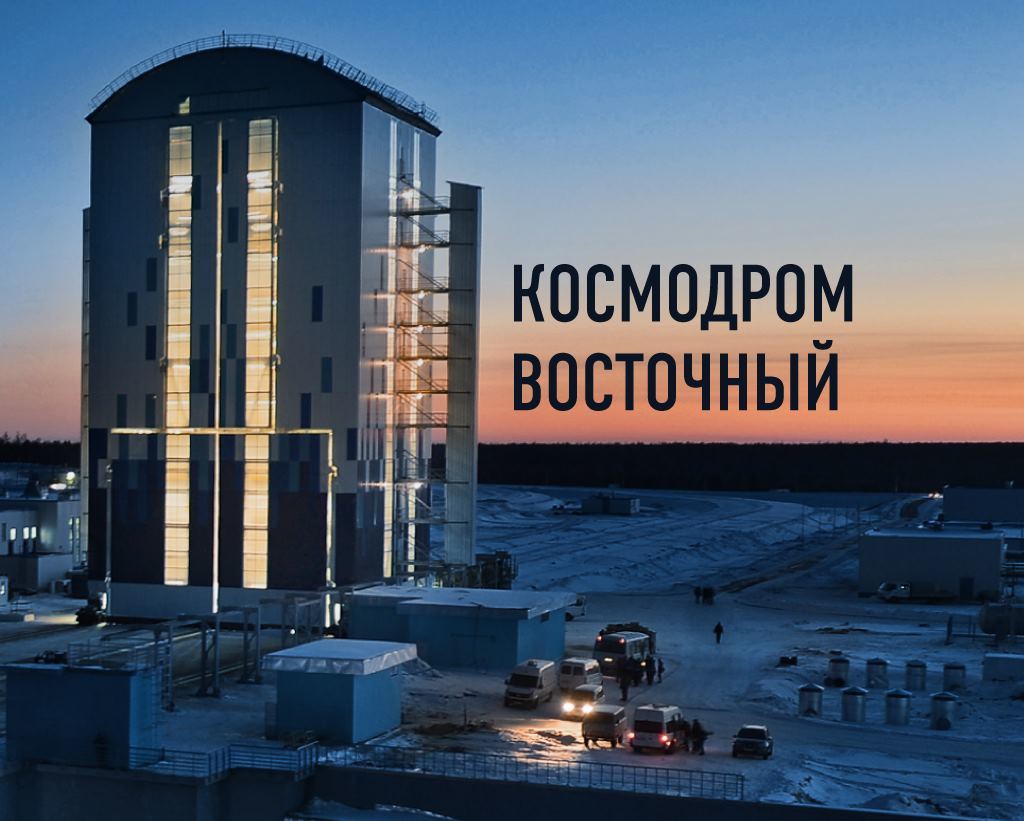The Vostochny cosmodrome: the Soyuz launched, what's next?

Today, the Soyuz-2.1a carrier rocket was successfully launched from the Vostochny cosmodrome. The rocket launched three satellites into space, they were already connected, the spacecraft went into the desired orbit. But after all, the spaceport was not built for one or two missile launches, what will happen next here?
In fact, a lot of plans. In the near future, it is planned to enter the active phase of the construction of another launch complex, called the Angara. Construction is planned to be completed by the end of 2021, with the simultaneous first launch of the new Angara launch vehicle. In 2023, according to the space program of the Russian Federation, the first manned launch will be carried out from Vostochny.
Long term plans
')
The Angara launch complex will allow spacecraft to be launched into high-energy orbits, as well as launching new-generation manned spacecraft. As Vicki tells us , the Angara is a family of modular-type launch vehicles with oxygen-kerosene engines, which includes four classes of carriers - from light to heavy - in the capacity range from 1.5 (“Angara 1.1”) to 35 (“ Angara-A7 ") tons in low-Earth orbit (when launched from the Plesetsk cosmodrome). The lead developer and manufacturer of the Angara family of launch vehicles is the MV Khrunichev State Space Research and Production Center.
Earlier, the deputy head of Roskosmos, Sergey Savelyev, stated that foreign partners were also interested in using the new cosmodrome, as reported by Izvestia. In particular, preliminary negotiations were conducted with NASA, although the details have not yet been disclosed.
According to the plan, the number of launches at the Vostochny cosmodrome should reach 8-10 unmanned launches per year as early as 2018. From 2023, as mentioned above, manned missions should also be carried out.
In the near future, Vostochniy will be involved in the further development of the GLONASS group. Grouping satellites will be launched exactly from here.
According to the authors of the Vostochny concept, the new cosmodrome will be of interest to China, South Korea and Japan. Perhaps these countries will join Malaysia, Vietnam, Indonesia and Singapore.
Why "East"?
The cosmodrome is located near the town of Tsiolkovsky (previously it was the village of Uglegorsk) in the Amur Region. Construction has been going on since 2012. The advantage of the site is that the initial part of the rocket’s flight trajectory passes far from the densely populated regions of Russia, as well as the territories of foreign countries. It is also a positive thing that the areas of falling of the separating parts of the rocket are located in sparsely populated areas or neutral waters.
According to the plan, the majority of space programs will be transferred from Baikonur (Russia leases the spaceport until 2050) to Vostochny. The load on Baikonur will gradually decrease.
Fully transfer all operations to the "East" is not planned. “Positioning the Orient as an alternative to Baikonur is, in my opinion, strategically wrong, since Kazakhstan is our closest partner in the Eurasian Economic Union, finding a cosmodrome there is a definite plus, not a minus, it gives us the opportunity to strengthen cooperation with Astana in the field of high technologies” , Says Andrei Ionin, a member of the Tsiolkovsky Academy of Cosmonautics.
Structure of the cosmodrome
Currently, the structure of "Vostochny" includes the following objects:
- Technical complex, including 121 structures with a total area of 170 thousand m 2 . This is where the rocket is prepared before launch. 1800 people take part in this process.
- Starting complex, including 83 buildings with an area of 45 thousand m 2 . 270 people take part in the work.
- Administrative and business complex, from where management and coordination of work at the cosmodrome is carried out.
When is the next launch?
Wait, it turns out, a long time. The next launch will take place only next year, the head of Roscosmos, Igor Komarov, said. The third launch of the launch vehicle will also take place in a year. Before the second launch, the spaceport constructors have a year left to correct and refine some problem areas. According to Komarov, now "in the process of improvements more than twenty wishes for improvement."
Well, for now, let us once again admire the take-off of the Soyuz launch vehicle:
Source: https://habr.com/ru/post/393397/
All Articles